When the Whole Rib Cage Hurts
Rib cage consists of 12 thoracic vertebrae, 24 ribs, sternum-breastbone and the coastal cartilages which provide the connection of ribs and the sternum. Ribs assist a human in motion, expansion and contraction of the abdominal region. Rib cage surrounds the ribs and protects them. Rib cage is an elastic, flexible protective covering.
In the chest area, nerves come out of the spine and split into two different ways. One of the parts goes toward the under part of the skin as it sends the fibers even further to the surface of the skin during its travel half way around the thorax. The other part goes from the bottom of the rib just around the sternum and then it surfaces to the skin before going back in the direction of the side of the same level as the first nerve.

Causes of Rib Cage Pain
A fractured rib is one of the most common causes of rib cage pain on both sides, not just the left one. If a person experiences painful sensations on the left side or the right side of the rib cage, the doctor usually performs an X-ray scan an MRI scan or a CT scan. Another thing that can cause pain on the left side of the rib cage is the inflammation of the cartilage. A person can sometimes even mistake it for a heart attack because the painful sensation sometimes tends to spread to the back and the arms as well. Fortunately enough, this inconvenience does not last for long but it causes a lot of pain.
Irritable bowel syndrome is another medical condition which can cause pain on the left side as well because the gases tend to move up and get stuck in the left loop of the intestine. There is a benign condition that mainly happens when the rib cage muscles get inflamed and it is called costochondritis. This is a problem that occurs quite a lot in children and it happens because of the viral respiratory infections or too much straining from coughing.
Bruised Ribs can Be a Complicated Condition
From the point of view of a physician, bruised ribs are a sign of a specific muscle injury, especially affecting the muscles located around the ribs. There are a large number of people who are convinced that this injury actually relates to the ribs themselves, which is not completely accurate. Ribs themselves represent chest bones that are responsible for providing a person’s heart and lungs with a shelter as they guard them from any possible damage. Ribs tend to be fairly easily injured as a direct consequence of various accidents and falls. Severe and chronic coughing may also damage the ribs.
It is also extremely important to make the distinction between the bruised and the broken ribs, for when having the latter in mind, the damage is direct and affects the bone itself, whereas in the former case, the muscles that are located around the ribs are damaged. This is why it is not possible to detect this type of injury by doing an X-ray, but is easily noticeable if there are specific signs and symptoms. There is not a particular and definite treatment, it is up to the injured person to take the initiative and certain steps that are surely to ameliorate the condition and speed up the overall convalescence.
Time Required to Heal
Bruised ribs need a really long time to return to normal and proper condition. When having the period required for ribs to heal fully in mind, a person should be aware that this can range anywhere from three weeks and all the way to six weeks. A person in question ought to safe guard the ribs from any additional and unwanted damage. One of the ways to guard against any additional injuries is to consult a doctor about the steps that need to be taken.
Unlike the more severe rib injuries such as broken or cracked ribs, which can have a devastating effect on a person’s lungs or the heart if not treated properly and in due time, bruised ribs do not pose such a serious and direct threat, despite the fact that this type of injury can be extremely unpleasant, as well as cause a lot of pain. In order to hasten the healing of bruised ribs, some of the measures a person can take are the usage of painkillers, rib support belt and ice pads (20 minutes in the course of the day).
Rib Cage Pain Treatment
The doctors commonly prescribe different treatments depending on the seriousness of the pain. Anti-inflammatory drugs like ibuprofen are usually prescribed in minor cases of rib cage pain. However, if the pain is more severe a patient may receive tricyclic anti-depressants. In the most serious cases a patient will receive a local anesthetic and a steroid injection.
- take painkillers, such as paracetamol or ibuprofen – avoid taking ibuprofen for 48 hours after your injury as it may slow down healing,
- hold an ice pack (or a bag of frozen peas in a tea towel) to the affected ribs regularly in the first few days to bring down swelling,
- rest and take time off work if you need to,
- breathe normally and cough when you need to – this helps clear mucus from your lungs to prevent chest infections,
- if you need to cough, hold a pillow against your chest,
- walk around and sometimes move your shoulders to help you breathe and clear mucus from your lungs,
- take 10 slow, deep breaths every hour to help clear your lungs,
- try to sleep more upright for the first few nights,
- do not wrap a bandage tightly around your chest to stop your lungs expanding properly,
- do not lie down or stay still for a long time,
- do not strain yourself or lift heavy objects,
- do not play any sports or do any exercise that makes your pain worse,
- do not smoke – stopping smoking may also help your recovery.



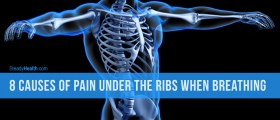
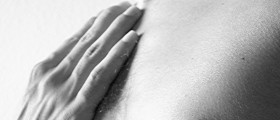
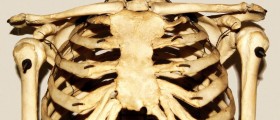





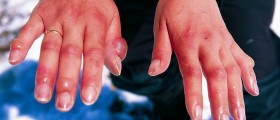



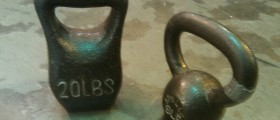
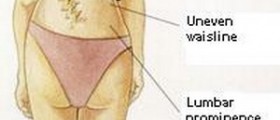
Your thoughts on this
Loading...